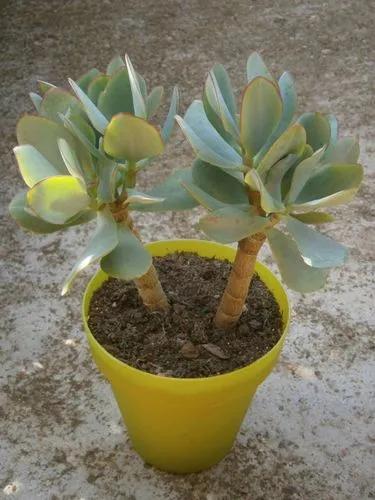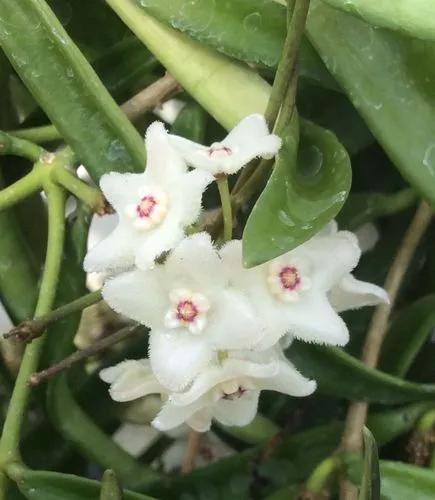Description: Titanopsis fulleri is a more or less distinct populations of Titanopsis calcarea with flater, erect leaves. It is a low growing, mat forming succulent plant with bluish green basal rosettes formed of 5 or 6 pairs of leaves covered with dark raised dots. The markings closely resemble the rock structure in which they are found. Its blooms are deep yellow.Rosettes: 4-5 cm wide, each containing 5 or 6 pairs of leaves.Leaves: With roundish triangular tip 2-2.2 cm long, c. 4 mm broad towards the base to 10 mm broad above. The backs of the leaves are roundly keeled, the upper surface flat and slightly concave. The leaves are a beautiful blue-green with a reddish tinge, the surface covered with with dark dots along the margins. This wart-like roughness can vary in colour from almost pure white to creamy grey, ochre, greyish-brown, bluish, or red on a purple ground. The thickness of the crystal layer in the outer epidermal wall decreases rapidly from the tip into the valleys between the warts, which therefore stand out more prominently than in the other species.Flowers: To 16-18 mm in diameter, dark yellow in late autumn and winter. Titanopsis will often have a 'sneak' opening on a sunny afternoon and then appear to be tightly closed for a week or more until another suitable time occurs.Taxonomic note: Material of Titanopsis fulleri matches Titanopsis calcarea in fruit shapes and seed characters completely, both features separating this complex from the other species. Nevertheless, forms with more erect leaves exhibiting warts on a margin rather than on a terminal triangle are often treated as Titanopsis fulleri. Plants with these deviating leaves can form populations of their own or occur mixed with plants typical of T. calcarea.
Titanopsis Fulleri Care
Titanopsis Fulleri



What is the plant
How to Care for the Plant

Water

Needs moderate water when growing in late fall and early spring. Keep somewhat dry the rest of the time.

Sunlight

Enjoys bright shade in summer and full sun in the other seasons.

Soil

Like all living rocks, they thrive in porous soils with excellent drainage.
Ease your plant care routine with PlantIn's personalized system.

Temperature

It can tolerates high heat and heavy frost (hardy to -10° C).

Popularity

37 people already have this plant 11 people have added this plant to their wishlists
What's wrong with your plant?
Related Plants
Discover more plants with the list below
Popular articles






